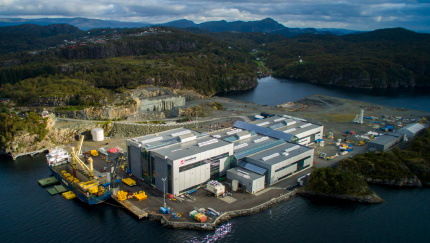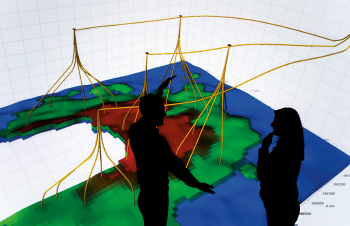
See how the Schlumberger pore to pipeline approach will enable optimized production and recovery from challenging reservoirs.

To optimize production and recovery from the increasingly challenging reservoirs in subsea projects, the industry is developing more sophisticated subsea processing equipment and control systems with a focus on flow assurance and monitoring asset integrity. But it takes more than individual technological improvements to achieve a step change in subsea operations.
The Schlumberger integrated subsea production system, born from the OneSubsea joint venture established in 2013, employs a pore to pipeline approach to meet these challenges. By combining reservoir analysis and production assurance with advanced subsea hardware engineering, OneSubsea is successfully delivering technology solutions that are substantially improving production performance and recovery.
This robust capability comes from the joined knowledge and experience of Schlumberger and Cameron implemented through early engagement with customers during field development. Our deep understanding of reservoir dynamics, asset modeling, production assurance, and subsea production and processing technologies informs a unique, innovative perspective that translates into effective performance throughout the field’s life to increase return on investment.
Complementing the integrated system framework, OneSubsea is setting new technology benchmarks, such as the development of 20,000-psi subsea systems to meet the demands of high-pressure, high-temperature (HPHT) reservoirs. These systems complement current HPHT offerings and leverage the Cameron Group’s substantial experience with production trees and high-pressure, large-bore blowout preventers.
In the future, one way to improve the return and cash flow of offshore developments will be to take a more phased, modular approach, as opposed to deploying monolithic full-scale developments. Another option is the development of subsea fields by using existing surface processing and production facilities, thereby reducing the time and expense required to build new infrastructure. Through OneSubsea, Schlumberger is helping customers transform their subsea developments by integrating production operations, well performance, and reservoir management around a shared dynamic asset model.

The three stations shown of the Manara production and reservoir management system control the production characteristics of an individual zone. Produced fluids, noted with green for oil and blue for water, flow through a screen to the station where pressure, temperature, flow rate, and water cut are measured.
Saudi Aramco had a vision and commitment to develop technology that would take hydrocarbon recovery to a new level. Named after the Arabic word for lighthouse, the Manara system is the result of an eight-year collaboration between Saudi Aramco and Schlumberger.
The Manara production and reservoir management system is an intelligent completion system for multizone, multilateral, extended-reach, and Extreme Reservoir Contact wells. Combining 30 patented technologies, the Manara system provides permanent downhole pressure, temperature, water cut, and flow rate monitoring as well as in-lateral flow control of zones in real time.
The information derived from a conventional completion system typically permits engineers to make production decisions in days or weeks. The Manara system’s real-time permanent monitoring reduces the decision-making time to hours. This means reservoir workflows that commonly required three to six months can now be performed in one day. Integrated workflows from multiple disciplines create a collaborative work environment, where the identification and correction of problems in individual zones are made in real time. Rig time is reduced by optimizing a zone-by-zone cleanup procedure that also minimizes health, safety, and environmental risks.
The Manara system uses fewer parts than a conventional completion system. Electric power and downhole data pass through an inductive coupler that can service any number of well junctions. One electric control line connects through the wellbore to the wellhead via a single penetration.
Saudi Aramco’s Dhahran Advanced Research Center coordinated user requirements and, in conjunction with Schlumberger Engineering, developed a qualification testing program to de-risk the enabling technologies in the Manara system. This included extensive field testing in multiple Saudi Aramco wells. The Schlumberger focus on the transformation themes of technology, reliability, efficiency, and integration was important for the successful collaboration with Saudi Aramco.